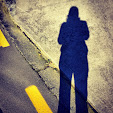‘Colour is the strongest tool we have as designers to impact the viewer’s perception of our work’. (Best, 2012)
When I embarked on this project I discovered that focussing on one colour in two different environments was an excellent means for testing design theories around context. Research revealed that, fascinatingly, while there is a great deal of work done in research on colour physics, physiology and language, there remains relatively little on colour psychology in humans. It is agreed however, that colour is an important aspect of any design since its choice carries with it messages that can be understood across sex, age, culture and even species. (Elliot, 2013)
The purpose of the selection of photographs I have chosen for this essay is to demonstrate that while the colour yellow can have one connotation in an urban environment: function, caution and danger; the meaning can be perceived entirely differently in the home environment where it can signify warmth, sunshine and domesticity.
Metaphorically, the colour yellow could be me as I move between my two worlds, being seen as one person here and another, there. Yet, essentially, I am the same person in either place.
Yellow can show us
The context of the colour
Affects its meaning
Brief: The final iteration, produce a photo essay inclusive of eight images that expresses your critical perspective through your unique design voice. Consider the essay in its totality as a comprehensive and unified composition. Much like the haiku, the impact of your final photo essay should aim to be greater than the sum of its parts and should support you in articulating your design identity.
The following are two images from my essay. There is a PDF presentation of the essay in its entirety, including the haiku, at the end of this post.
The following are two images from my essay. There is a PDF presentation of the essay in its entirety, including the haiku, at the end of this post.
Bibliography
- Best, J., & Textile Institute (Manchester England). (2012). Colour design theories and applications. Oxford: Woodhead Pub., in association with the Textile Institute.
- Elliot, A. J., & Maier, M. A. (2012). Color-in-context theory. (pp. 61-125) Elsevier Science & Technology. doi:10.1016/B978-0-12-394286-9.00002-0




No comments:
Post a Comment